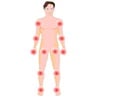A joined study revealed that the number of emergency department visits by children could be reduced by half if the primary care office that they visit had evening office hours.

"These findings are an important step in understanding where primary care practices and medical home programs can be most effective in making changes to enhance access," says U-M pediatrician Joe Zickafoose, M.D., M.S., formerly a research fellow with the Child Health Evaluation and Research Unit at the University of Michigan C.S. Mott Children's Hospital and now a health researcher with Mathematica Policy Research in Ann Arbor, Mich.
Primary care practices for children around the country are working on ways to make it easier for families to communicate with the practice to get advice and make an appointment. A key goal of these efforts is to help parents avoid the stress and expense of unnecessary emergency department visits, and extending office hours into the evening might be an effective way to do this, says Zickafoose.
Efforts around the country to improve health care for children have increasingly focused on the "medical home" as a model to make primary care practices more accessible, comprehensive, and focused on quality improvement. A central aspect of the medical home approach is to enhance families' options for accessing their child's primary care practice, including 24-hour phone advice, email or patient portal communication, same-day sick visits, and evening and weekend office hours.
The investigators found that many parents did not know whether enhanced access services were available in their child's primary care office. Children whose parents reported that their offices had evening hours most nights of the week had half the number of emergency department visits compared to other children even after adjusting for factors such as health insurance and household income. But, only half of parents knew whether their child's office was open after 5 PM.Recent studies have shown that extended office hours seem to decrease emergency department use and some health care costs in adults, but no large studies have looked at practices for children.
The types of changes practices need to make to enhance access can be costly and time consuming, so information about the most effective changes could help practices decide where to commit their resources, Zickafoose says.
Advertisement
The investigators looked at the association between parents' reports of the "enhanced access services" and the child's emergency department visits, controlling for other factors that are frequently associated with emergency department use.
Advertisement
"We hope that our study encourages parents and primary care practices to communicate more about when the office is open and when they can call for advice," says Zickafoose, lead author of the study.
Source-Eurekalert











